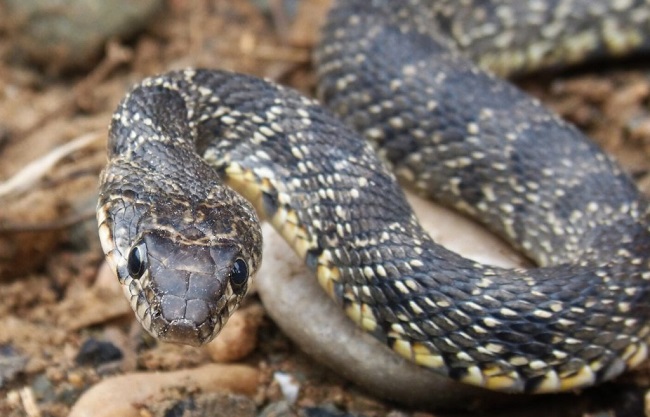Carnivorous Snakes, a term synonymous with intrigue and mystery, are fascinating creatures that captivate with their hunting prowess and diverse diet.
From the deadly King Cobra to the elusive Ball Python, these serpents are paramount in maintaining ecological balance.
In this article, we will delve into the breeds of Carnivorous Snakes, exploring their unique characteristics, behaviors, and significant roles in our ecosystem.

Carnivorous Snakes Breeds
Here are some of the breeds of Carnivorous Snakes:
Read Also:
King Cobra – The Deadly Hunter
The King Cobra, known for its intimidating size and deadly venom, is a carnivorous snake that primarily feeds on other snakes.
Native to the rainforests and plains of India, southern China, and Southeast Asia, this breed is renowned for its exceptional hunting strategy, delivering venom with pinpoint accuracy.
Ball Python – The Constrictor
Ball Pythons are non-venomous Carnivorous Snakes that employ constriction as their primary hunting technique. They are native to central and western Africa and feed primarily on small mammals and birds. Ball Pythons have become popular pets due to their manageable size and docile nature.
Reticulated Python – The Giant Predator
As the world’s longest snake, the Reticulated Python boasts an impressive diet that includes mammals and birds. Hailing from Southeast Asia, this carnivorous breed uses its colossal size and strength to constrict and consume prey, even as large as deer or pigs in extreme cases.
Eastern Coral Snake – The Venomous Beauty
Eastern Coral Snakes, native to southeastern parts of the United States, are small but deadly carnivores. Their vibrant colors hide a potent neurotoxic venom. Primarily feeding on other snakes and small lizards, these snakes employ a ‘chew and hold’ technique to deliver their venom.
Boa Constrictor – The Adaptive Eater
Boa Constrictors are versatile carnivores, eating a varied diet based on their habitat, which ranges from South America to the southwestern United States. They feed on anything from birds to medium-sized mammals, utilizing their constricting ability to suffocate their prey.
Anaconda – The Aquatic Ambusher
Anacondas are among the world’s largest and most fascinating Carnivorous Snakes. These semi-aquatic serpents reside in the marshes, swamps, and slow-moving rivers of South America.
The Green Anaconda, the largest of the species, has been known to prey on wild pigs, deer, birds, turtles, and even jaguars.
Anacondas are ambush predators. They use their aquatic habitat to their advantage, lurking under the water’s surface, waiting patiently for unsuspecting prey to come within striking distance.
They then employ their powerful constriction technique to suffocate the prey before swallowing it whole.
Western Diamondback Rattlesnake – The Striking Deserts Dweller
The Western Diamondback Rattlesnake is a notorious carnivorous breed native to the United States and Mexico. Inhabiting deserts, grasslands, and scrub brushlands, they feed on small mammals, birds, and lizards.
The hunting strategy of the Western Diamondback Rattlesnake is a fascinating display of patience and precision. These snakes are ambush predators, lying in wait for their prey and delivering a fast, venomous strike.
They’re also known for their signature rattling sound, a warning signal produced by shaking the specialized scales at the end of their tails.
Understanding the Role of Carnivorous Snakes in the Ecosystem
Carnivorous Snakes play a vital role in maintaining ecological balance. They help control the population of their prey species, preventing overpopulation and ensuring the stability of the food chain. Some snakes also act as prey for larger predators, further contributing to ecological equilibrium.
Read Also:
Conclusion
Carnivorous Snakes, despite often being misunderstood, are an integral part of our ecosystem. These diverse breeds, each with their unique hunting strategies and diet, showcase the incredible versatility of nature.
By understanding and respecting these fascinating creatures, we can coexist peacefully and sustain our planet’s biodiversity.
























